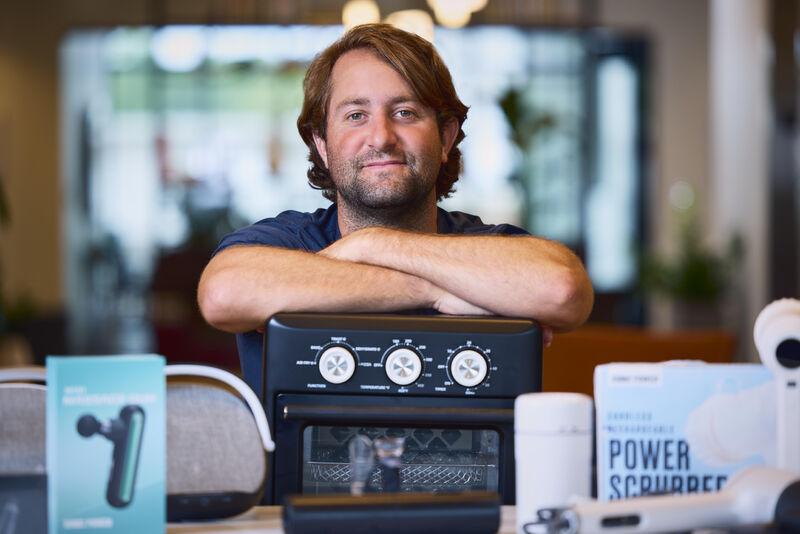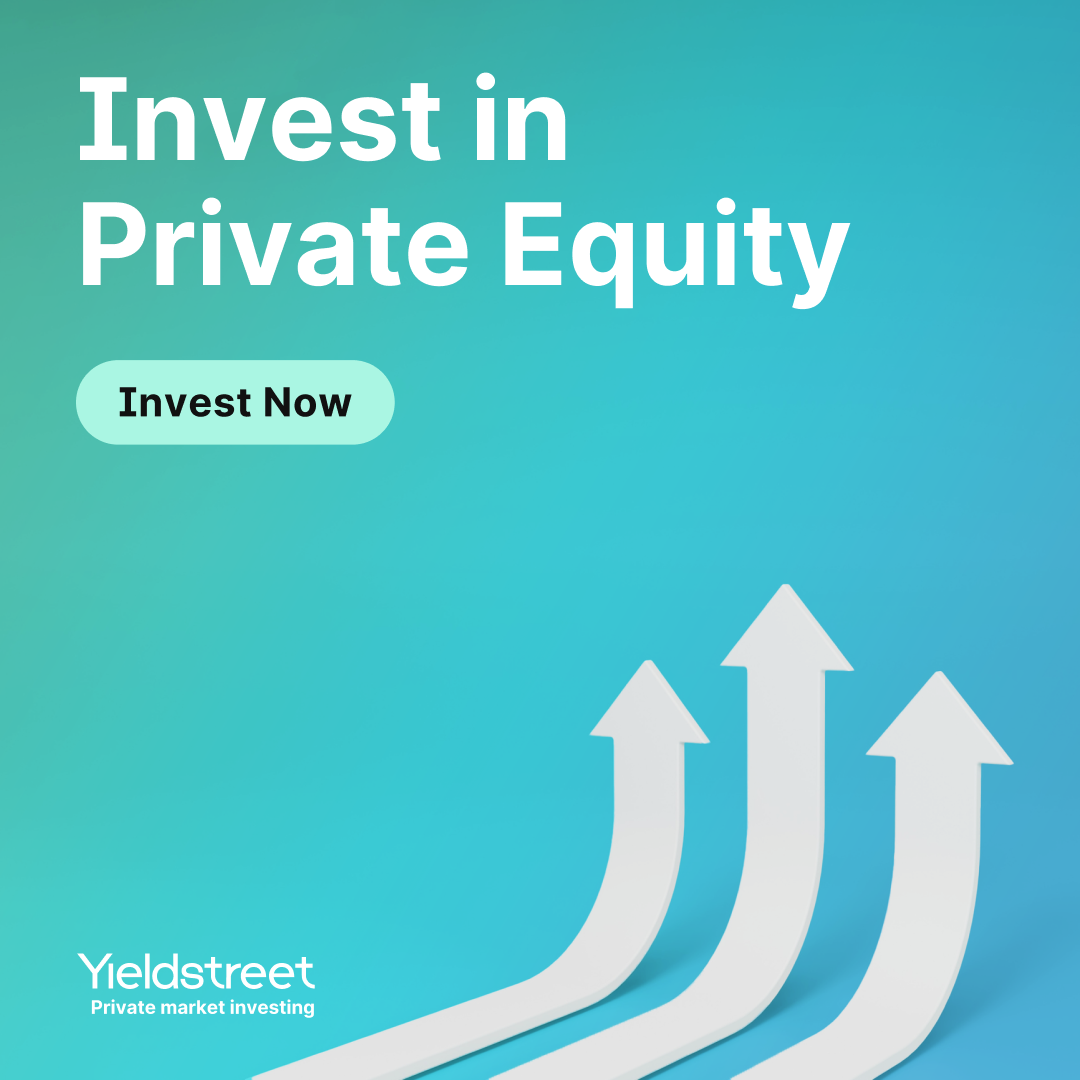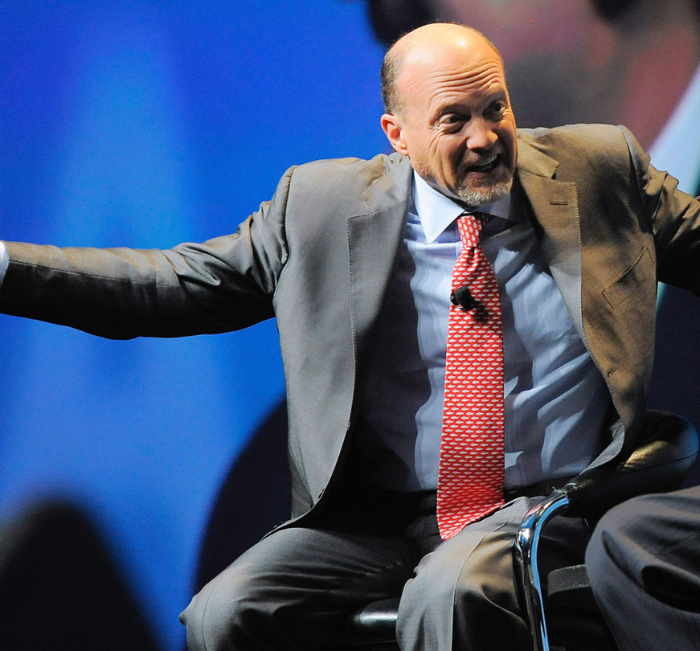The same factors that make FBA so compelling may be what suppresses multiples.
We hope you enjoyed last week’s issue on how to buy a private island. That was probably the most fun I’ve had exploring a topic, yet for whatever reason that issue had the lowest open rate in months! ????♂️ Damn election sucking up all the oxygen… Anyways, if you missed it, all past issues are available on the website.
This week’s issue is about Amazon FBA stores, and why they seem to be bucking the digital asset inflation trend.
Let’s dive in!

Table of Contents
What is Amazon FBA?
FBA, or Fulfillment by Amazon, is Amazon’s own internal logistics system, made available to 3rd party sellers.
The way it works is simple: instead of buying inventory and having it shipped to your own warehouse, you ship it to Amazon directly. Amazon stores your inventory in their warehouses; charging you small fee for each item, and 6-20% of the sale price when a product sells.
The benefits for sellers are obvious. By plugging your operations directly into Amazon’s ecoystem, you don’t need to rent a warehouse or hire workers. You don’t need to handle packing, printing or shipping. You don’t even need to handle (most) customer support or deal with returns. Amazon takes care of it all.
Oh, and since, the goods are being shipped from Amazon directly, every single FBA item is eligible for Amazon Prime, which has 150 million members and offers free 2-day shipping in the US. So your visibility & ability to ship quickly is boosted tremendously.
As with nearly everything Amazon does, the system works incredibly well. With more than 288 million square feet of warehouse space in the US alone (the equivalent of 1,500+ Walmart Supercenters) Amazon is the single largest and most successful third-party logistics provider (3PL) in the world.
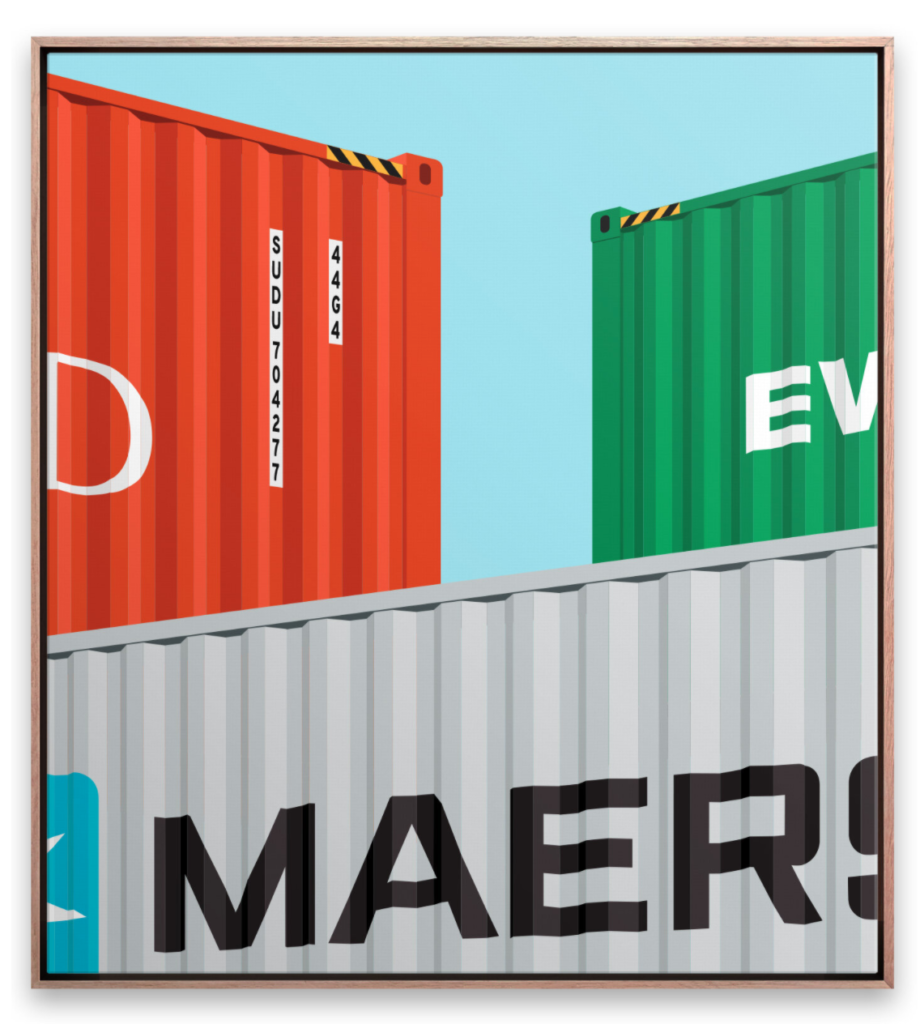
Amazon’s third-party sales are exploding
Because of the success of this supremely well-oiled machine, the number of 3rd party & FBA sellers on Amazon has exploded.
Consider these insane data points:
- There are over 2.3 million active third-party Amazon sellers globally
- Of the roughly 350 million products for sale on Amazon, 97% are from third-party sellers (!)
- Third-party sellers account for nearly 60% of all Amazon marketplace sales (!!)
- Each year over a million new sellers join Amazon, though less than 10% of these will ever reach $100,000 in annual sales
- Finally, of the world’s top 10,000 third-party sellers, 66% are using FBA
Note: You’d think pulling these stats would be easy, but you’d be wrong. Because Amazon is growing so damn fast, half the stats you find online are over a year old — which when you’re dealing with this kind of growth, might as well be a decade.
Ecommerce multiples over time
As I explored in Issue #4, content website multiples are increasing. There are likely a few reasons behind this digital asset inflation, including the Fed, increased attention in this space, and the fact that RPMs themselves are up as well. Whatever the reason, the average multiple for a content site is now safely above 2.5x annual net profit.
However, not all digital assets are created equal. While the average multiple for a sold content site hovers around 2.5x, FBA sites typically sell for just 1.3x annual net profit!
All else being equal, buying a fully operating business for just 16 months’ worth of net earnings is kind of bonkers. Why do FBA stores sell at such a discount?
To find out, I explored the multiple trends over time for FBA stores, dropship sites, and all Ecommerce sites. I sifted through 1,500+ sold listings on Flippa going back 5 years.
I didn’t find out what I expected, but I uncovered some interesting stuff…
FBA multiples over time
2019 was the first year Flippa began breaking out FBA stores as a standalone category, so the data is a bit sparse.
- In 2019, the median multiple for sold FBA stores was 0.9x – 1.2x
- From January through October 2020, the median is 1.3x – 1.4x
So it might actually be trending upwards, but still much lower than content sites.
Dropship site multiples over time
I then looked at sold Ecommerce sites that employed a dropshipping model:
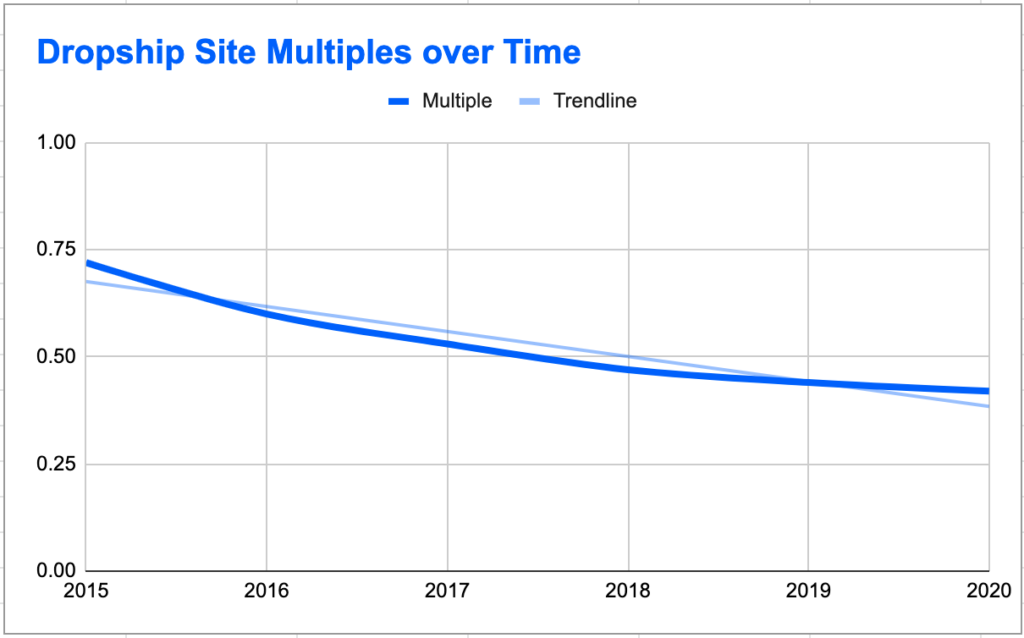
Huh, look at that. Dropship site multiples have been steadily falling for years, down ~39% since 2015.
The low multiples are due to two things: first, the dataset includes starter sites, which pushes the average multiple down; second, with Ecommerce sites selling physical goods, the wholesale cost of goods is typically included or factored in as part of the sale. Since dropship sites carry no inventory, their final sale price and multiple are lower.
Regardless, the trend line is clear: Dropship sites appear to be bucking the digital asset inflation trend!
You know me, I couldn’t stop there. I also looked at Dropship site RPMs over time:
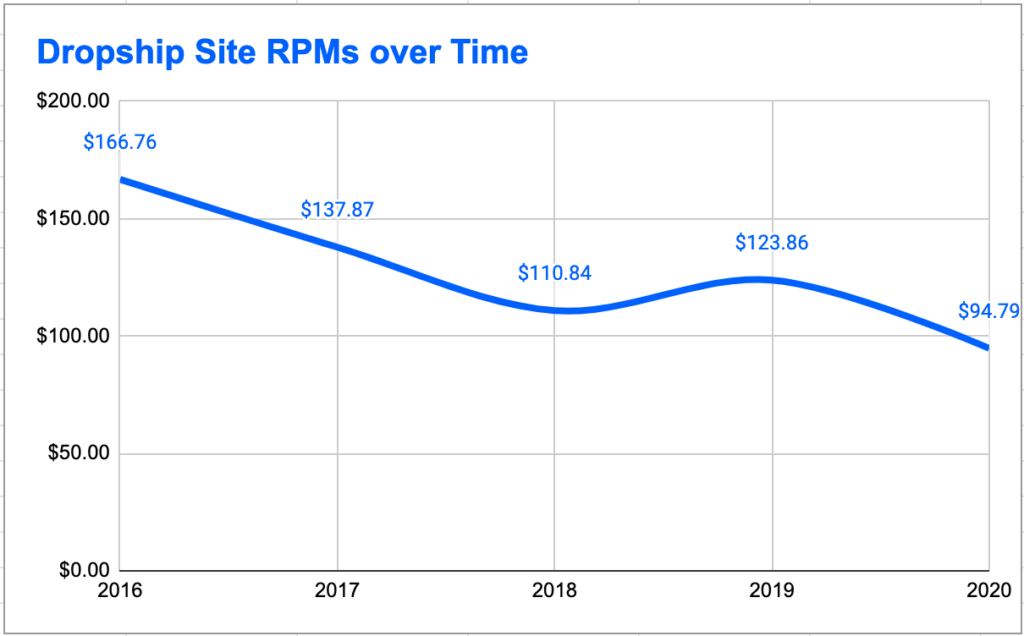
Yup, they’re down as well. Meaning sellers are earning less revenue per visitor than they used to. Very interesting.
Okay, one more:
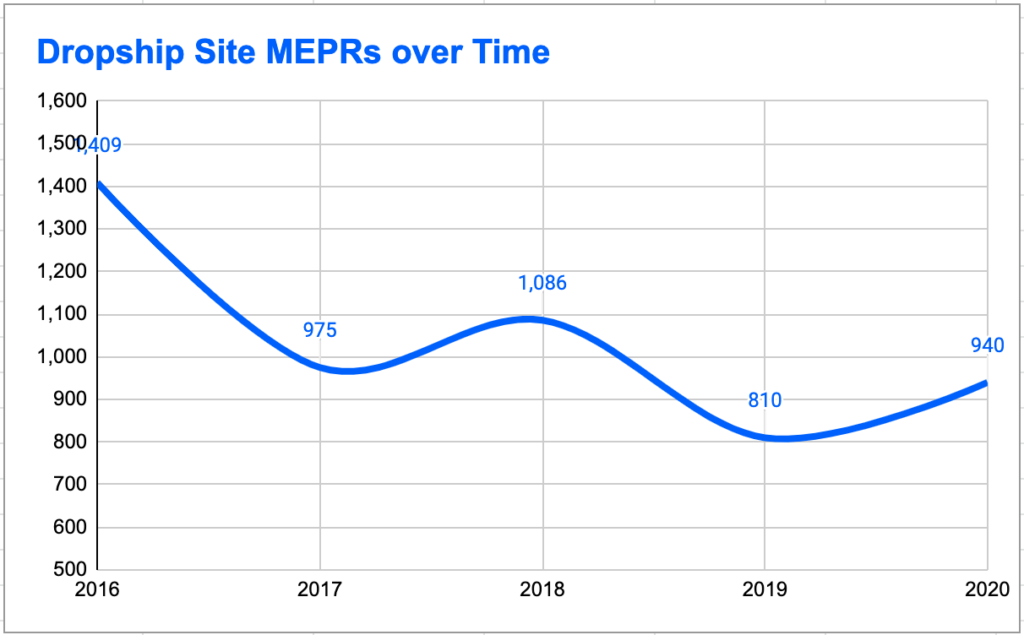
As Traffic Advantage members know, the MEPR is a proprietary metric I created. It measures how efficiently a site converts traffic into revenue, compared to its asking/sale price.
As you can see, MEPR is down. Since multiples and RPMs are both falling, this makes sense.
Follow me for a moment: If the MEPR were to stay the exact same over time, it would mean that multiples were falling in direct proportion to falling RPMs. Since this is not happening, we can conclude that multiples are indeed falling, but not as fast as they mathematically should be.
This means that sellers are either hesitant to sell for less than the price they want, or buyers are still willing to pay the higher multiples. (Or both)
Wow.
Ecommerce site multiples over time
Finally, I looked at the trends for all Ecommerce sites in general:
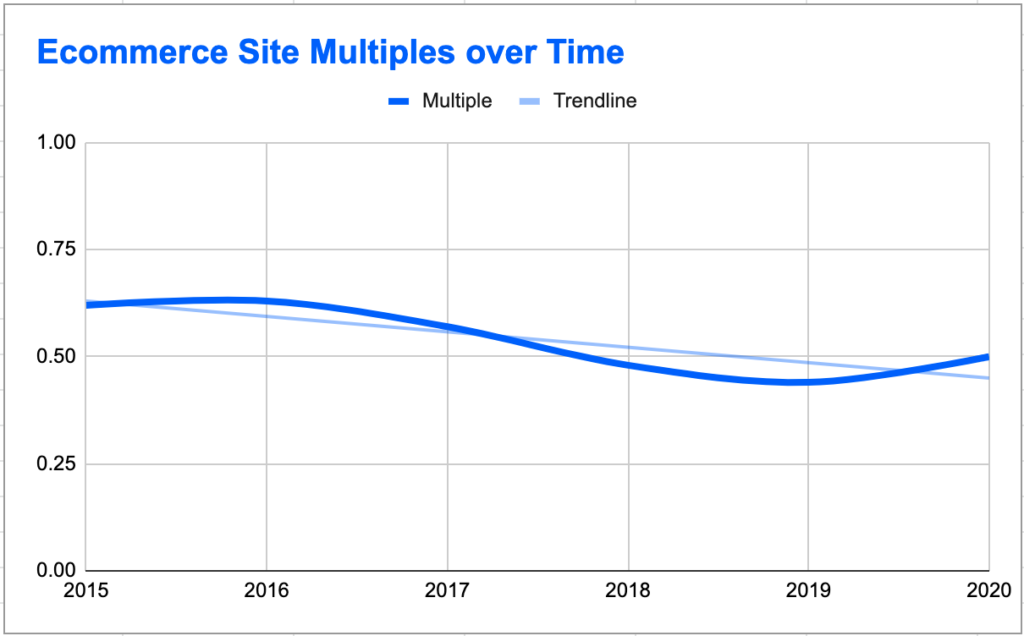
Wavy and slightly down. Mostly flattish. The downward trend may be reversing a bit, it’s tough to say.
Let’s look at RPMs:
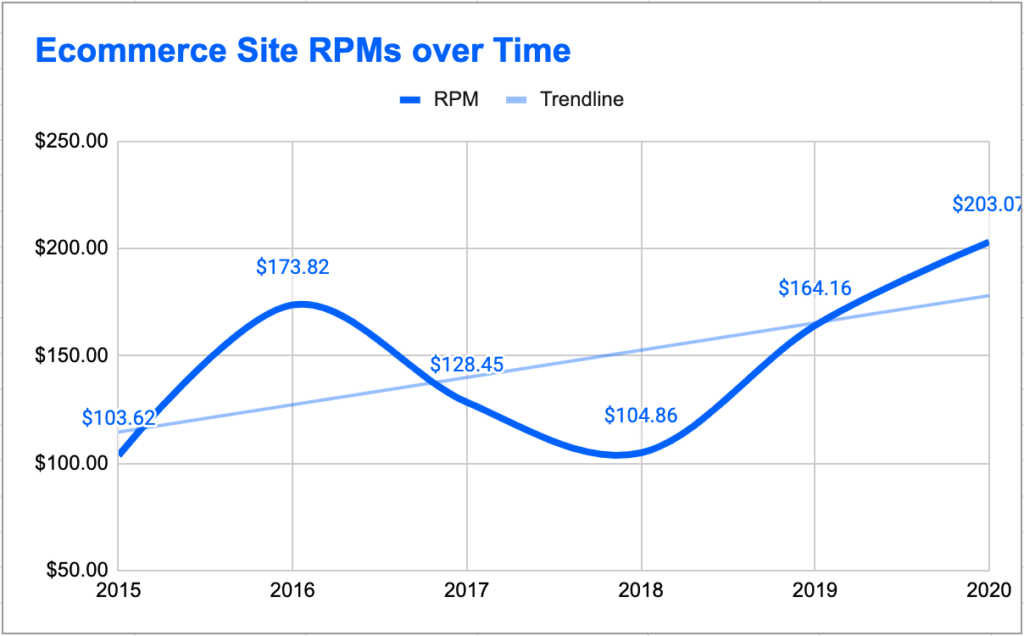
Interestingly, RPMs on Ecommerce sites as a whole are up. So overall, sellers are earning less from dropship sites, but more from “regular” Ecommerce sites.
By that logic, regular Ecommerce sites (those shipping physical inventory) are not only holding the entire Ecommerce market up, but are likely trading at a discount, proportionally, to other digital asset classes.
A lot to think about here! ????
Why are FBA multiples lower?
So back to FBA. It appears FBA multiples are up slightly up over the past 2 years, albeit with somewhat limited data.
But, they are still much lower content websites. Here are a few reasons why:
No real website
When you sell on Amazon, you don’t really have a website. Sure, you have products that live on a URL somewhere. But that’s not the same thing as having a website — or even a proper storefront for that matter.
Amazon buyers barely know or care who they’re buying from. That’s by design. Amazon wants to keep it that way.
Unlike other marketplaces such as eBay or Etsy, Amazon strips sellers of having a unique identity. They fully define the layout and everything behind it. You have no control over design, look & feel, workflows, upsells, anything really.
Heck, you can’t even have a custom URL! Amazon storefront URLs don’t look like ‘amazon.com/mycoolshop’, they look like ‘amazon.com/78912358’. I suppose you could redirect a URL to your Amazon storefront, but it’s not common. Most sellers couldn’t even tell you what their storefront URL is.
You don’t own the customer
When a buyer purchases an item from your website, you “own” that customer.
You can plaster your brand on the box, include coupons, flyers, and other fun stuff in the package, and market to them later through email or social media. You can ask them to follow you and provide personalized incentives to turn them into repeat customers. When they want more widgets, there’s a strong chance they’ll return to your shop over and over.
However, when you sell through FBA, you have no brand. Amazon ships your product and slaps their own logo on the box. There’s no personalization, no coupons, no flyers, and you explicitly do not have the right to email them offers. They’ll never think of you again. When they need more widgets, they’ll head right back to Amazon.
What you have 250 heavily-policed characters through which you try to let the customer know that your store in fact exists. Most of this space is used up begging for a 5 star review so you can stay on top of Amazon’s algorithm.
No way to monetize traffic
Say you have an Amazon storefront with 10,000 unique visitors per month. Awesome! (for Amazon) If that were your own website, you could be monetizing through ads, sponsorships, etc. You could be earning anywhere from $50 – $500/month on your traffic alone, before you made any sales at all.
But not with Amazon. It’s their customer, and it’s their traffic. Not yours. Funny enough, Amazon will occasionally further monetize your pageviews through affiliate links to fill in the gaps on their own inventory. But you won’t see a dime.
Tremendous platform risk
The good news is that spinning up an FBA store is extremely quick and easy. There’s a monthly seller’s fee, but that’s about it. You don’t need to spend money advertising. This is huge.
The flip side is that you’re ultimately at the mercy of a) an algorithm that you have very little control over, b) an erratic platform with constantly changing rules, and c) a company that is notorious for banning sellers immediately and without warning. (Amazon once banned my account a week before Black Friday, without any recourse or room for appeal. I had to pull strings with the CEO of a company called ChannelAdvisor to help get my account reinstated. It was brutal.)
Being at the whim of a machine that can end your world overnight is not a recipe for sleeping well. You’re always one bad review or chargeback away from total annihilation. Even if your account stays up, the algorithm will bury your products so deeply nobody will ever see them.
Endless competition
Part of Amazon’s goal is to continually decrease prices, so they benefit by having as many sellers as possible on the platform, duking it out with each other. Competition is at an all-time high, margins can be comically thin, price wars are brutal (fueled in part by aggressive repricing software), and sellers face an increasing margins race to the bottom, while Amazon gleefully takes their 6-20% cut of each sale.
The fact is, Amazon has made it too easy to start selling. 3,466 new sellers join Amazon every day. That’s 144 new sellers every hour, or 2 every minute, all vying for the same set of eyeballs and placement in the Buy Box. This endless competition means permanent pressure on low prices and excellent feedback/reviews — the two primary factors that influence your visibility.
This downward price pressure is so large and extends so deep into the economy, that some economists theorize Amazon may actually be suppressing inflation itself. (If you think you may recall me discussing this before, you’re not mistaken. If I had the time, I’d write a whole thesis on this. The idea that a single company could be affecting one of the most important measurements in economics is both a fascinating concept, and unprecedented throughout human history.)
Amazon will eventually steal your success
This is probably the most important concept sellers need to understand.
Even if you find a relatively undiscovered niche, even if you create a unique product from scratch that nobody else can sell, even if you are able to fend off competitors, counterfeits, and resellers through MAP enforcement, you still aren’t safe.
Why? Because Amazon will find out and start producing your item themselves.
Yes, Amazon competes with its own sellers. They have access to all the data, they know what sells, and they know what you’re making off your brilliant, unique product.
As Jeff Bezos has famously said, “Your margin is my opportunity.” Even if you find huge success selling on the Amazon platform, don’t expect it to last. Amazon will copy your product, undercut your price, and drive you into oblivion.
At that point, your best hope is literally a Congressional investigation which will probably go nowhere. Good luck!
How’d you like this week’s issue?
✅ Interesting, thanks
❌ Not interesting
Disclaimer
All formulas, metrics, derivatives, calculations, and opinions are my own. They are not endorsed by and do not necessarily represent the opinions of Flippa Pty Ltd.





